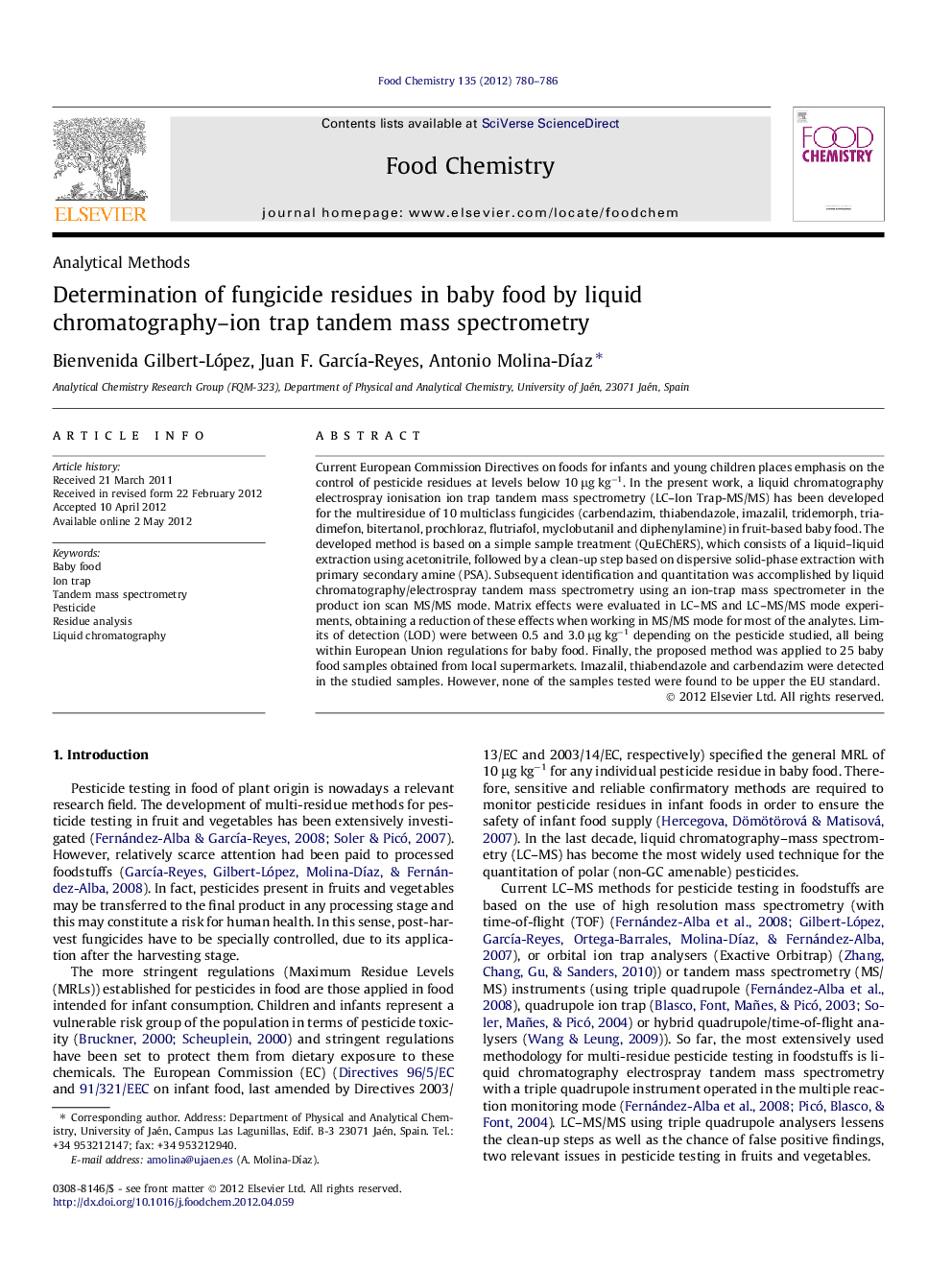| Article ID | Journal | Published Year | Pages | File Type |
|---|---|---|---|---|
| 1185819 | Food Chemistry | 2012 | 7 Pages |
Current European Commission Directives on foods for infants and young children places emphasis on the control of pesticide residues at levels below 10 μg kg−1. In the present work, a liquid chromatography electrospray ionisation ion trap tandem mass spectrometry (LC–Ion Trap-MS/MS) has been developed for the multiresidue of 10 multiclass fungicides (carbendazim, thiabendazole, imazalil, tridemorph, triadimefon, bitertanol, prochloraz, flutriafol, myclobutanil and diphenylamine) in fruit-based baby food. The developed method is based on a simple sample treatment (QuEChERS), which consists of a liquid–liquid extraction using acetonitrile, followed by a clean-up step based on dispersive solid-phase extraction with primary secondary amine (PSA). Subsequent identification and quantitation was accomplished by liquid chromatography/electrospray tandem mass spectrometry using an ion-trap mass spectrometer in the product ion scan MS/MS mode. Matrix effects were evaluated in LC–MS and LC–MS/MS mode experiments, obtaining a reduction of these effects when working in MS/MS mode for most of the analytes. Limits of detection (LOD) were between 0.5 and 3.0 μg kg−1 depending on the pesticide studied, all being within European Union regulations for baby food. Finally, the proposed method was applied to 25 baby food samples obtained from local supermarkets. Imazalil, thiabendazole and carbendazim were detected in the studied samples. However, none of the samples tested were found to be upper the EU standard.
► Multiresidue chromatographic method for 10 multiclass fungicides in fruit-based baby food. ► QuEChERS sample treatment used: L–L extraction and dispersive solid-phase extraction clean-up. ► LC electrospray ionisation ion trap tandem mass spectrometry used in the product ion scan MS/MS mode. ► Reduction of matrix effects when working in MS/MS mode for most analytes. ► Concentrations in the low μg kg−1 range were measured.
